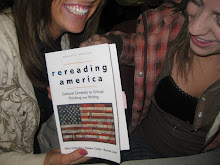
Ahhh THE LITTLE HANGING DOT!!! The comma is among the most confusing and misused punctuation marks in English grammar. Some people place a comma whenever they pause in their proofreading. While this strategy is a good guide, it is not foolproof. Some guys have a vague recollection of grade-school grammar and guess at the comma’s proper placement. The problem here is that the rules get muddled over time. We see commas used incorrectly in print everyday, and for most of us, grammar school was a long time ago. Many folks seem to add commas whenever the mood strikes them, while others avoid commas entirely. For everyone who wants to overcome the comma, here are my 10 comma rules to remember
.
1. Use commas to separate independent clauses when they are joined by one of the following words (known as coordinating conjunctions): and, but, for, or, nor, so, yet. For example: “She likes to read, and I like to write.” However, in the example “I like to run and swim,” no comma is needed because there is only one independent clause.
2. Use commas after introductory clauses, phrases, or words that come before the main clause. Don’t put a comma after the main clause when a dependent clause follows it (except for cases of extreme contrast, for example: They said they were not sleepy, although they fell asleep immediately).
3. Use commas to set off nonessential clauses, phrases, and words that occur in the middle of a sentence. Use one comma before the nonessential information to indicate the beginning of the pause and one at the end to indicate the end of the pause. To determine if the sentence element is essential, leave out the clause, phrase, or word, to see if the sentence still makes sense. If it does, then the element in question is nonessential and should be set off with commas. Here is an example of a nonessential clause: The girl, who happened to be a member of the club, was late for dinner.
4. Use commas to separate two or more coordinate adjectives that describe the same noun. Coordinate adjectives are adjectives with equal status in describing the noun. You can decide if two adjectives in a row are coordinate by asking the following questions: Does the sentence make sense if the adjectives are written in reverse order? Does the sentence make sense if the adjectives are written with and between them? If you answer “yes” to these questions, then the adjectives are coordinate and should be separated by a comma. Here are some examples of coordinate and non-coordinate adjectives: She was a difficult, stubborn child (coordinate). They lived in a white frame house (non-coordinate).
5. Use commas to separate three or more words, phrases, or clauses written in a series. For example: The child enjoys playing baseball, reading comic books, and watching television.
6. Use a comma prior to adding a quotation. The coach instructed his team, “You have the ability to win if you maintain your focus.”
7. Use a comma near the end of a sentence to separate contrasted coordinate (equal status) elements. For example: The girl said her favorite subject was history, not science.
8. Use commas to set off items in dates March 13, 1992, was the day we became best friends. (When using only the month and the year in a sentence, no comma is necessary. For example: My first trip to Florida in March 1992 is still vivid in my mind.)
9. Use commas to set off geographical names. For example: Charleston, South Carolina, is a city rich in history.
10. Use commas to avoid confusion. For example: Tell the doctor, pepper is one of your asthma triggers. Or better yet: Tell Christopher, Columbus discovered America.


